Conglomerate 451 is rough around the edges, There’s no getting away from that fact, but it’s not without some merit.
Type: Singleplayer
Genre: RPG
Developer: RuneHeads
Publisher: 1C Entertainment
Release date: 20 Feb, 2020


We’ve had quite the revival of the style of RPGs that were popular in the 90’s in the last few years. Pillars of Eternity, Shadowrun Returns, Legend of Grimrock and StarCrawlers are all games that look to the past for inspiration. And now we’ve got Conglomerate 451, a tile-based “blobber” (a first-person RPG where you have a party of characters that all move together in one big “blob”) with turn-based combat and randomly generated level.
Conglomerate 451 is also, like the above-mentioned games, quite rough around the edges. For some people, that will be a dealbreaker, for others, the qualities of the game will shine through, and they’ll find an interesting RPG that takes inspiration from the likes of Might and Magic X as well as Xcom, in order to make something that feels rather unique, even if it does not quite nail the landing.
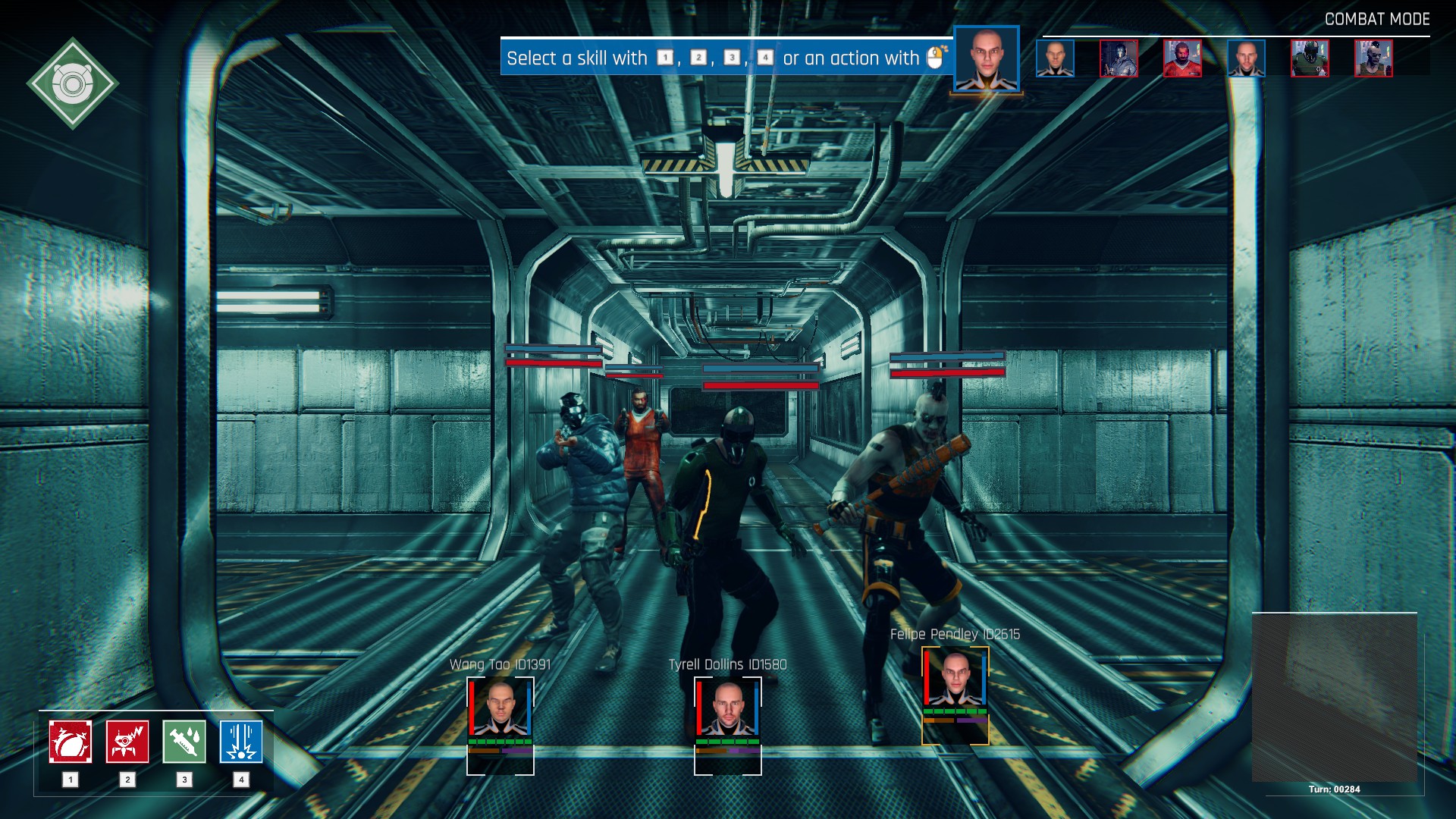
Story & Setting
If you’re familiar with the style of Cyberpunk that was big in the 80’s and early 90’s, then the setting in Conglomerate 451 will feel immediately familiar. Think Neuromancer, Shadowrun (minus the fantasy elements) or Cyberpunk 2020, and you have Conglomerate. Big neon signs, large slums segregating the poor from the rich, people running around with katanas for no sensible reason, chunky cybernetics and big corporations that pretty much run the show.
And this is where you come in. You’re the leader of a special agency, and your job is to push back against these huge corporations and restore a semblance of order to the city. And to help you in your task you’ve been given the permission to create clones of agents. Instead of recruiting new agents from the outside, you can just make the ones you need, which underpins one of the core ideas of the cyberpunk genre, that life is cheap and people are expendable.
While the premise is interesting, the story does ultimately fall somewhat flat. After the introduction, there’s not a whole lot of story in the game. Each region you get to visit has a small writeup, which explains a bit about its backstory, ranging from an underwater habitat to a hab block to a foundry and so on, and you also find some small text logs as you explore the different levels, that you can decode, to find out a bit more about the world, but apart from that, there’s not a whole lot, and you can go several levels without learning anything more about the setting.
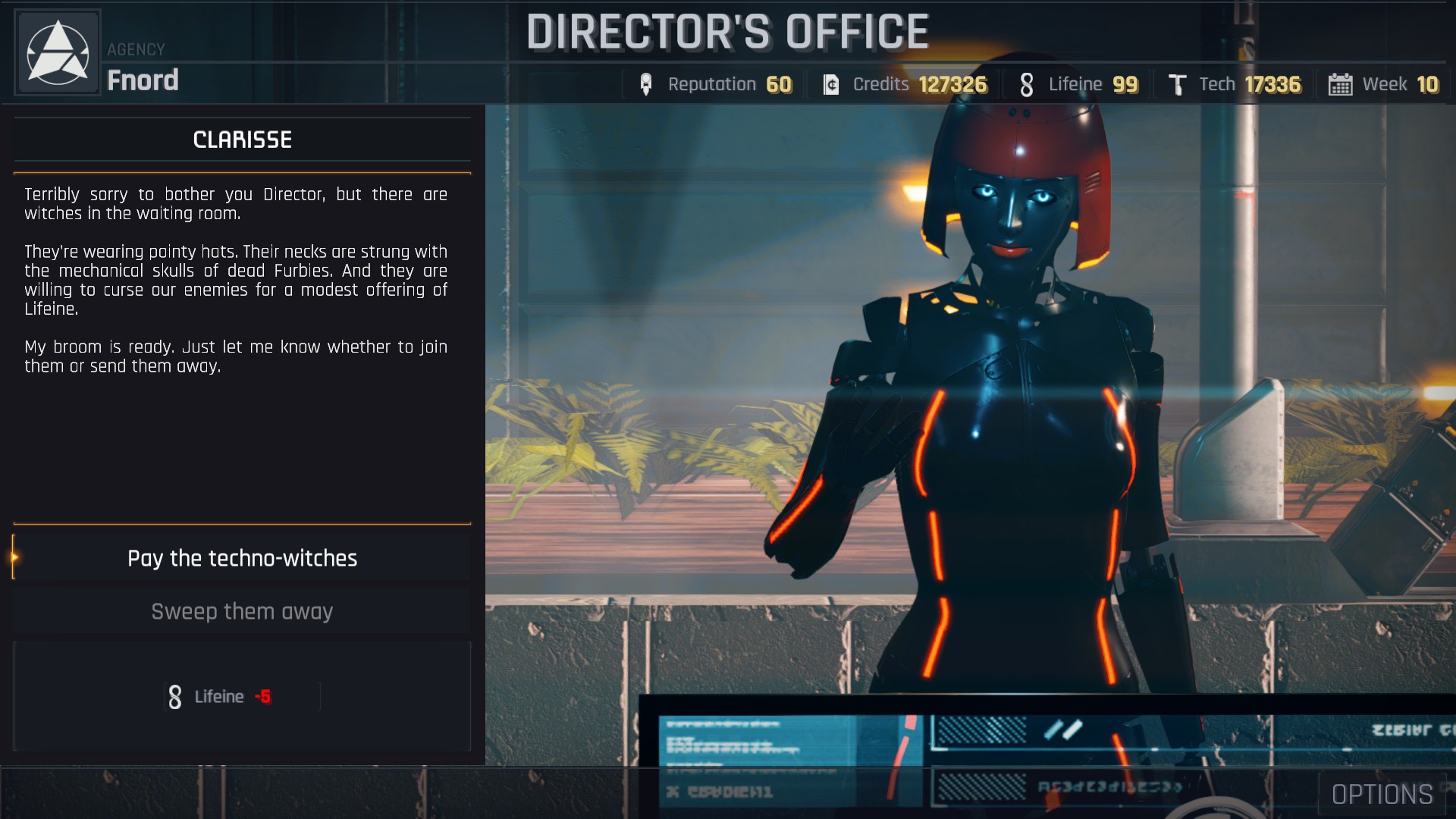
Graphics & Sound
Conglomerate 451 gives a somewhat mixed impression when it comes to its graphics. The way the levels look, the lighting and so on look quite good. But then you’ve got blurry facial textures and many things have an odd sheen to them that makes the game look somewhat cheap. It’s weird, because when the game looks good, it looks really good (for a mid-budget game), but then you have those small wrinkles that just pull the overall impression down a bit. At least every region feels unique, and seeing a new region for the first time is quite fun. There are also some neat details here and there, hinting at a larger world than what we get to see.
The music is decent enough, as far as background music goes. It’s not very memorable, but it feels suitably “cyberpunk”. And most importantly, it’s never annoying. The same can’t be said for your AI companion though, who loves to repeat the same few joke over and over and over again. You can mute it at least.
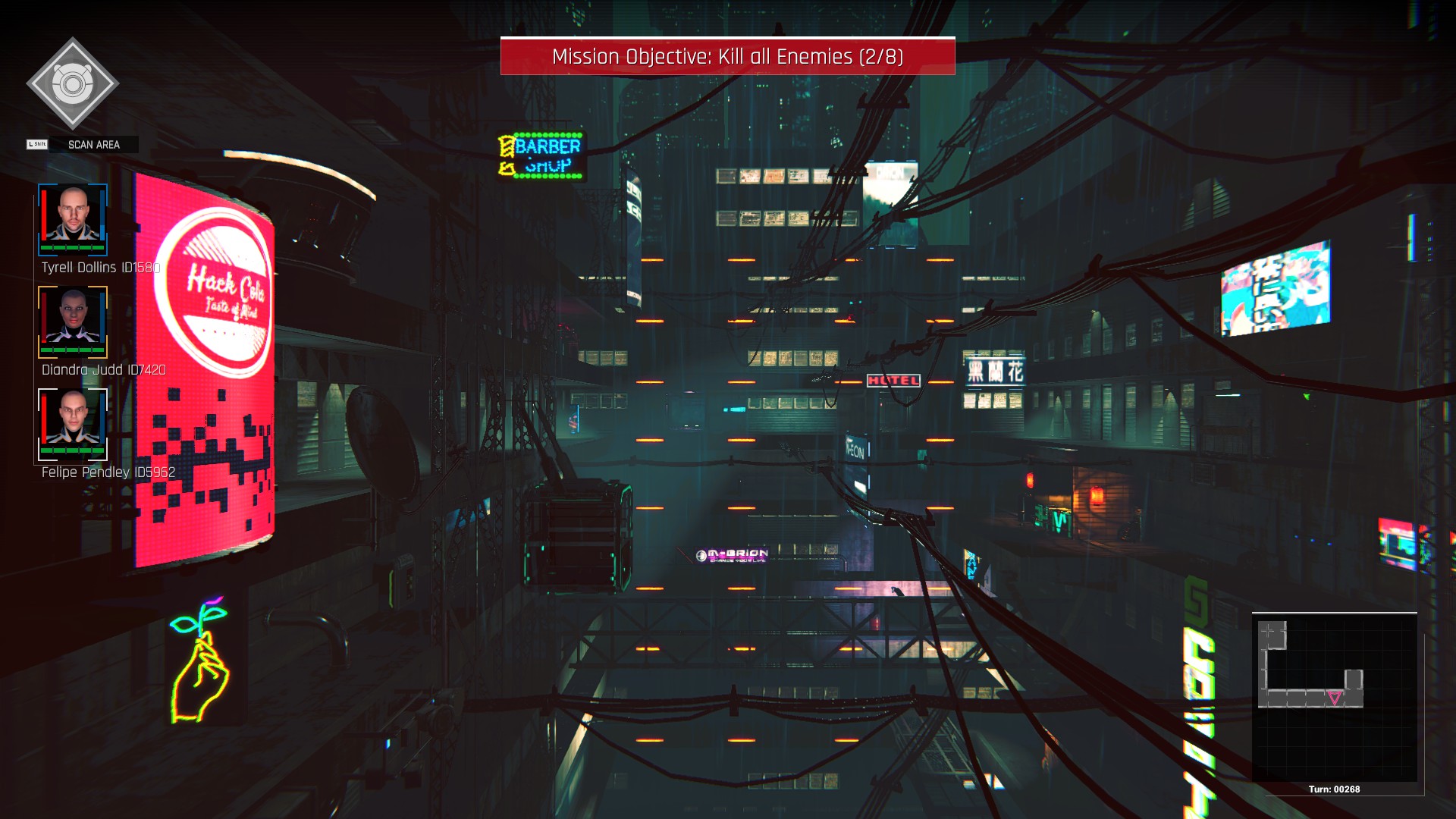
Gameplay
Conglomerate 451 is at its core a grid-based dungeon-crawler, even if the “dungeons” in this case are city streets, offices, factories and hab-blocks. And almost every level plays out more or less the same. You can chose between either starting in the city, or in the main level itself. In the city you can do some shopping, selling leftover stuff you don’t need, as well as fight against some more enemies. Once you’re in the level you have an objective that either boils down to “click on something”, “kill a specific enemy” or “kill all enemies”. The levels are randomly generated, using a set of pre-made rooms that are stitched together into something somewhat coherent. Although sometimes you run into layouts that make absolutely no sense. And after each level, the characters you brought along get some experience points. it does not matter if you killed all the enemies on the level, or just a few, you still get the same amount.
Combat is an important part of the game, and you’ll frequently find small groups of enemies, just standing around, minding their own business. Once you get close, combat is initiated, and both sides fight to the death. The exact number of enemies varies, and if several groups of enemies are close enough, you might end up having to fight all at once, although this is rare. Combat is turn-based, and when it’s time for one of your characters to act, you get to pick between one of four abilities, and then chose where to hit the enemy. Hitting different body parts can have different effects, but they also have different to hit penalties. The game clearly shows what the hit chance and any secondary effects are when you hover the mouse cursor over those body parts. Most attack abilities also have secondary effects, and some attacks are better against certain enemy types. There are also a wide variety of enemies, all with their own abilities, some being better at strengthening their allies, others deal more damage, and some can apply unpleasant status effects.
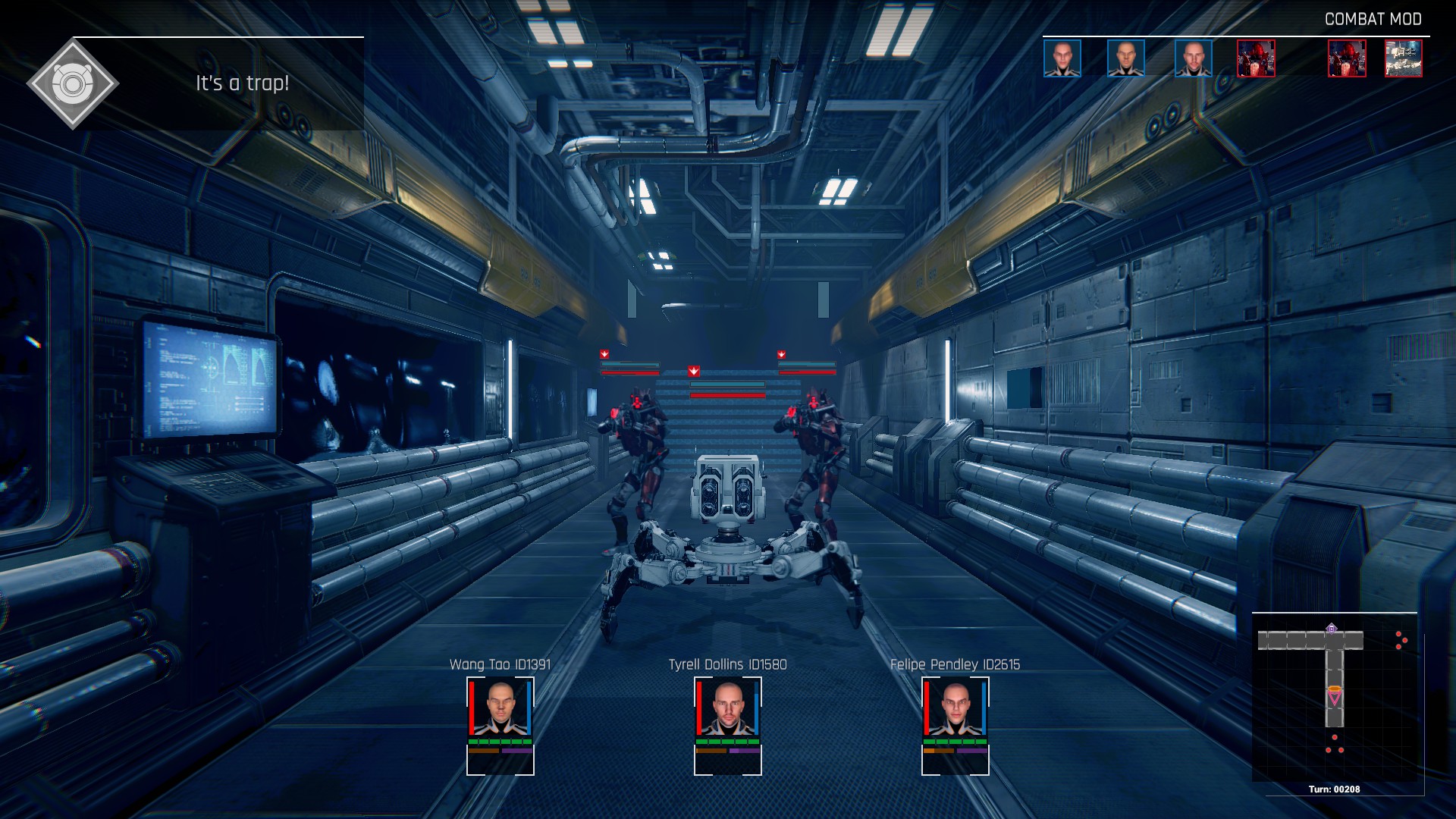
This all sounds like it would make for a complex combat system, with a lot of strategy and variety, but sadly no matter what you’re fighting, and what skills you have equipped, combat tends to play out pretty much the exact same way. The different enemy types don’t feel different to fight either, and combat usually boils down to identifying which enemy you think is the greatest threat and just trying to kill it as fast as possible. Enemies are a bit too good at resisting status effects for those to be worth using, unless they’re part of an attack that deals good damage, and which enemy is the most important to kill first is pretty much always the same. You’ll soon learn which enemies are the biggest threats, and it’s rare for that to change. So combat mostly boils down to a checklist. This enemy is more dangerous than that enemy, which in turn is more dangerous than that other enemy, and so you just kill then in that order.
Like any cyberpunk game, there are of course hacking minigames. These come in the form of a timing-based one, which simply comes down to timing your clicks right, and a perception-based one where you get a string of characters, and you get lines of text and when your string of characters show up in one of them, you click on it. The later is not as bad as it sounds, the strings of characters usually look like say a URL or a 4-digit code, and any potential candidates are highlighted, and the only tricky part here is if you have similar-looking ones. These break up the regular dungeon crawling a bit but are otherwise not anything special.
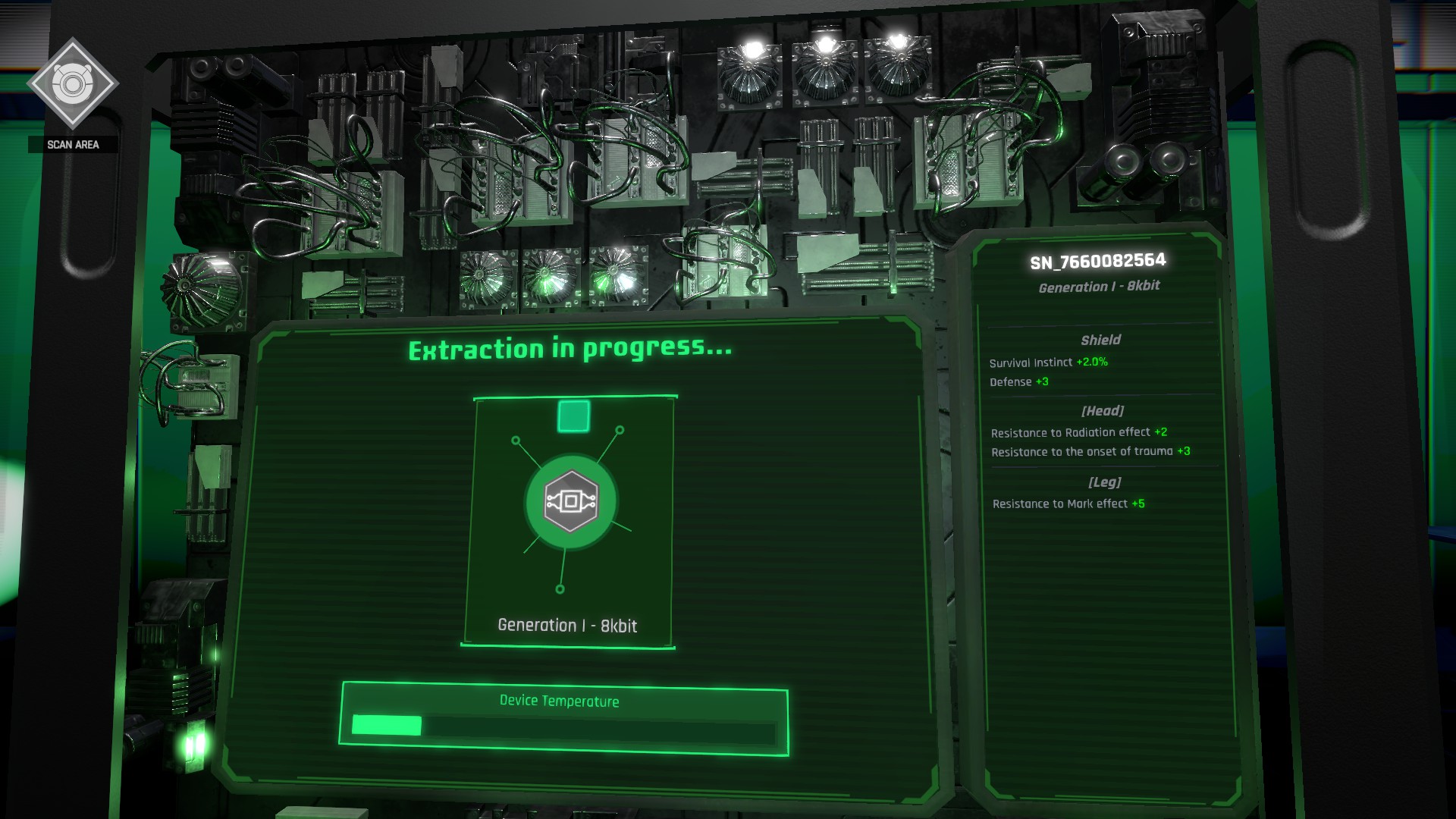
Between levels you get to return to your home base, and here’s where the Xcom-like part happens. As you beat levels, you get resources, which can be used to research new tech, creating new clones, upgrading your existing clones with better equipment or cybernetics and so on. It does not quite have the depth of Xcom, but there’s still a good sense of progression as you develop your team, and get access to better and better things. It’s also here where you care for wounded clones. Sometimes clones will return with serious wounds, depending on how much damage they took during the previous level (as well as some enemy abilities), and if these wounds are left untreated, they’ll become permanent. But letting a clone heal means you can’t bring it along for the next level, and there’s also a chance that the treatment might fail, and you’ll have to try again. It’s during this part that you also get to make the games more interesting and important choices. How do you spend your limited resources (well, tech is the limited resource, money is plentiful)? How do you want to build your party? Who gets what upgrade?
The games economy is a bit unbalanced though. Money is so plentiful it might as well not be a resource, but tech, which is used for most things, not just researching new technology, is in limited supply. Tech is the limiting factor in almost every situation, be it installing cybernetic limbs, researching new technology, training your clones or upgrading their gear.
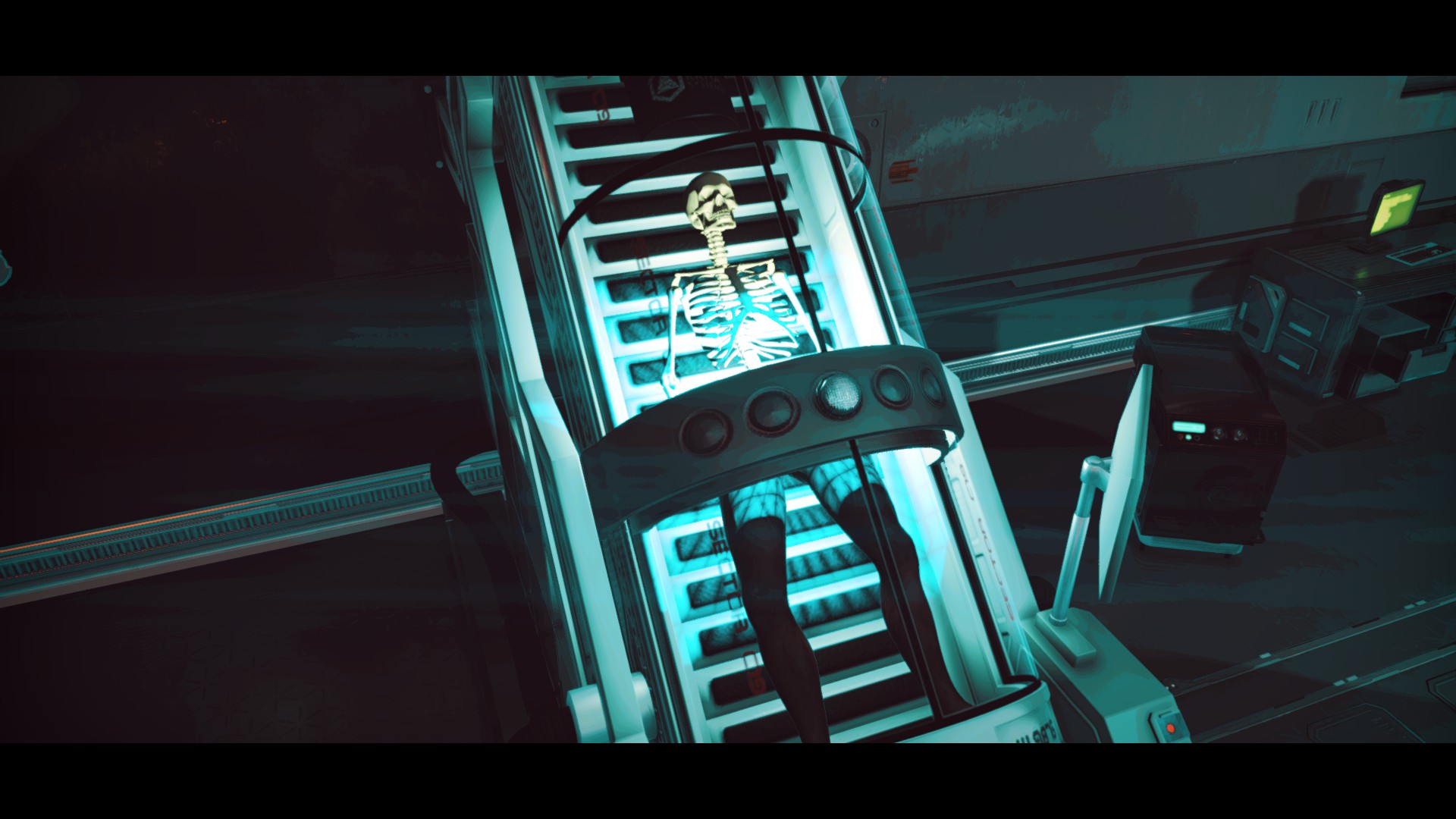
Closing thoughts
How do you rate a game like this? On the one hand, it’s got a rather compelling loop of going into dungeons, fighting monsters, bringing back resources for upgrading your guys, and then going back down again, on the other hand, most part of the game feel like they’re a bit unbalanced, or don’t quite work as well as I think the devs imagined when they were in the planning phase. For an example, despite the wide variety of different enemies, fights tend to play out pretty much the same, and once you’ve identified which enemies are more dangerous, you just beat them in order. And even if some enemies are more dangerous than others, or have nasty abilities, that still does not change how you approach fights.
The game is also a bit crash-prone. I had one crash during a level, but all my other crashes happened after I beat one, when the game loaded the base-menu. And when it crashed, it crashed hard, bringing down the computer with it, and forcing me to do a complete reboot.
Conglomerate 451 is a flawed game, and I think anyone’s enjoyment of it will boil down more to how willing they are to overlook the game’s flaws than anything else. There are some interesting things going on here, and for anyone who would rather play a flawed but interesting game than a game that’s highly polished but a bit generic, Conglomerate has a fair bit to offer, but on the other hand, I would imagine that a lot of people will find the game a bit too frustrating and repetitive to really be worth getting.










